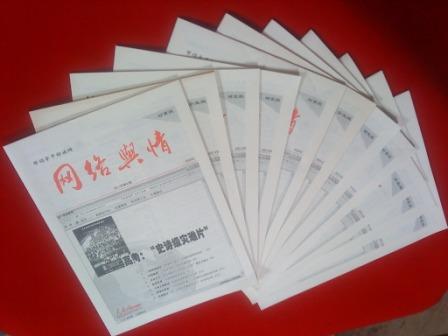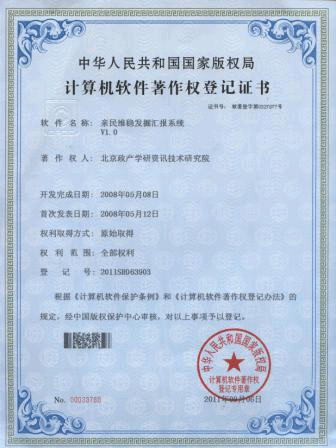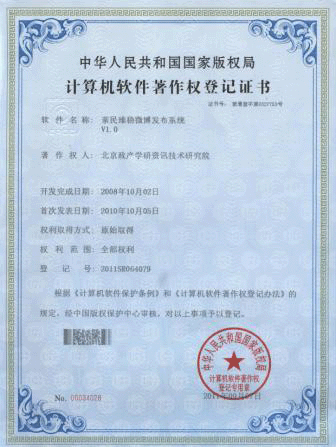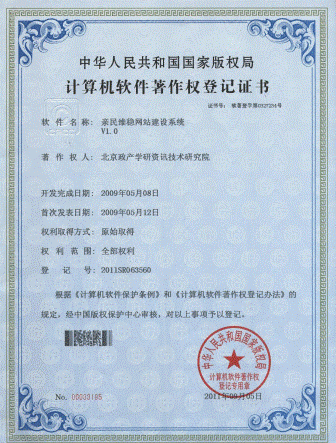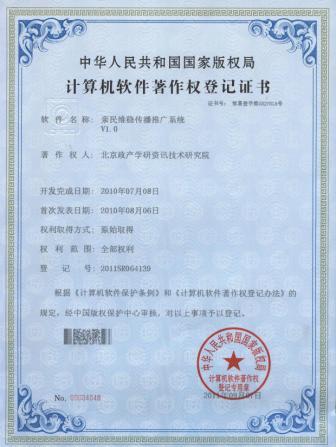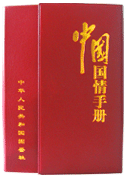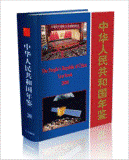亲民维稳热点推荐
- ·被闹钟惊醒后果相当于醉酒? 中医专
- ·中国首例涉外骨髓捐献在徐州采集 韩
- ·农妇产下巴掌大婴儿身长44厘米 体重
- ·卫生部就新版《献血者健康检查要求》
- ·心理专家:“吞钉男”系因渴求关注致
- ·内蒙古将对药品生产流通领域实施电子
- ·新生男婴被扔垃圾桶 目击者称未发现
- ·媒体称农村缺53万医生 不足5%医学生
- ·女子服下网购“秘方胶囊”致癫痫发作
- ·北京长富宫饭店举办首届“淮扬美食文
- ·卫生专家痛斥医院逐利行为 看病贵致
- ·两部门开展秋季中小学学校食堂食品安
- ·河南100新生儿有1个缺陷宝宝 产前诊
- ·7岁男孩在路边打闹遭车祸 睾丸破碎或
- ·卫生部要求做好国庆期间突发事件卫生
- ·调查显示中国居民膳食纤维摄入量不足
即刻使用亲民维稳解决方案!

发掘汇报软件
使用亲民维稳全套解决方案邀请
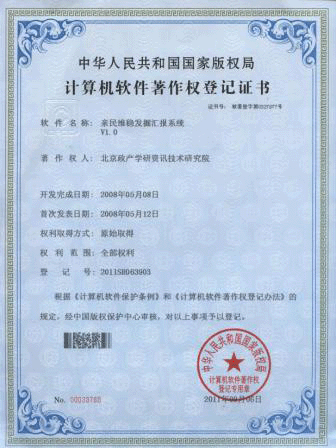
亲稳发掘汇报系统
国人餐费调查:家庭食品消费比重下降 更注重质量--亲稳网络舆情监测室
2013-01-17
中国人会在乎用于满足味蕾享乐所花费的金钱的多少吗?《小康》调查显示,家庭每个月在食品上的支出占家庭消费总支出的比重逐年下降,过半数人会在外请客吃饭,他们更注重吃的质量,而不是数量。
Chinese people will care about used to satisfy the taste buds enjoyment of the money?[well-off]Investigation shows that,Family every month on food spending accounts for the proportion of total household consumption decreases year by year,More than half people will pay to have a meal out,They pay more attention to food quality,It's not the quantity.
美国摄影记者Peter Menzel和作家Faith D’Alusio在2005年出版了纪实摄影集《Hungry Planet》(饥饿的星球),他们走访了24个国家,记录他们一周的食物消费。他们在中国找到了生活在北京的董姓人家,这是一个“四口之家”。这个家庭最喜爱的食物是糖醋里脊,一周的伙食费是155.6美元。
The photographer Peter Menzel and writer Faith D’Alusio in 2005 published the documentary photo collections[Hungry Planet](Hunger planet),They visited 24 countries,Record them a week to food consumption.They found a Chinese living in Beijing DongXing somebody else,This is a"Family of four".The family's favorite food is sweet and sour pork,A week's board is $155.6.
在这七年当中,中国经历了物价上涨,而食品价格被普遍认为是这一轮物价上涨的主要推手。那么,中国人会在乎用于满足味蕾享乐所花费的金钱的多少吗?“2013中国饮食小康指数”调查显示,35.3%的受访者表示食品价格上涨对自己的饮食结构“影响比较大”,28.7%的受访者认为“有一定影响”,17.6%的受访者甚至感到“影响很大”,还有18.4%的受访者则表示“影响不大”或是“没什么影响”。
In the seven years,China went through the prices up,And the price of food is generally considered to be the key driver of a rising prices.so,Chinese people will care about used to satisfy the taste buds enjoyment of the money?"2013 China food well-off index"Investigation shows that,35.3% of respondents said food prices to their diet"More influence on the",28.7% of the respondents thought"Have certain influence",17.6% of those surveyed even felt"affected",And 18.4% of respondents, said"The impact is not big"or"No effect on the".
月家庭食品消费比重下降 Month home food consumption ratio down
据有关专家及机构统计,2012年1至9月份,城镇居民食品支出占消费支出比例为36.5%,比上年同期的36.6%有所下降;农村居民食品现金支出占现金消费支出比例为35.2%,比上年同期的35.6%也有所下降。预计2012年城乡居民家庭恩格尔系数也会有所下降。
According to the statistics of specialists and organizations,From January to September of 2012,Urban residents consumption expenditure food spending accounts for 36.5%,Than the same period last year 36.6% decline;Rural residents food cash spending accounts for 35.2% cash consumer spending,Than the same period last year 35.6% decline also.In 2012 is expected to urban and rural residents family engel coefficient will also decline.
恩格尔系数是食品支出总额占个人消费支出总额的比重。一个家庭收入越少,家庭收入中(或总支出中)用来购买食物的支出所占的比例就越大,而随着家庭收入的增加,家庭收入中(或总支出中)用来购买食物的支出比例就会下降。
Engel coefficient is food spending accounts for the total personal consumption expenditure proportion of the total.A family income less,Family income(Or costs)Used to buy food spending the greater the proportion,But along with the increase of the family income,Family income(Or costs)Used to buy food spending ratio will fall.
《小康》调查显示,家庭每个月在食品上的支出占家庭消费总支出的比重为30%~39%(23.9%)的最多,其次是50%~59%(23.2%),再次是20%~29%(19.5%)。这比上一年度有所下降,在“2012中国饮食小康指数”调查中,家庭每个月在食品上的支出占家庭消费总支出的比重为50%~59%(25.0%)的最多,其次是40%~49%(22.4%),然后才是30%~39%(22.1%)。
[well-off]Investigation shows that,Family every month on food spending accounts for the proportion of total household consumption is 30% ~ 39%(23.9%)most,The second is 50% ~ 59%(23.2%),Once again, is 20% ~ 29%(19.5%).The decline of the previous year,in"2012 China food well-off index"In the investigation,Family every month on food spending accounts for the proportion of total household consumption is 50% ~ 59%(25.0%)most,The second is 40% ~ 49%(22.4%),Then is 30% ~ 39%(22.1%).
不过,随着城乡居民收入水平的提高和生活观念的转变,中国人的食品消费已经呈现出了营养化与多样化的趋势,注重安全、追求质量的倾向越来越明显。食物结构逐步优化,主食消费持续下降,主要副食品消费持续增加,肉、禽、蛋、奶等副食品消费量显著增加,副食消费更加倾向于高蛋白、低脂肪、低热量、绿色安全为主。
but,With the income of urban and rural residents and raising the level of the transformation of the notion of life,Chinese food consumption has revealed a trend of eutrophication and diversification,To pay attention to the safety/The pursuit of quality is more and more obvious tendency.Food structure step by step optimization,Staple food consumption continued to decline,The main food consumption increasing,meat/birds/egg/Milk and food consumption increased significantly,Fushi consumption more tend to high protein/Low fat/Low quantity of heat/Green safety is given priority to.
七成人请客花费在100至350元之间 Seven adult treat cost between 100 and 350 yuan
兼具热情好客、爱面子、讲礼仪等特点的中国人,在“外出就餐”问题上的表现是:对自己可以“冷酷”,但对别人一定要“温暖”。
Both hospitality/Saving face/The characteristics of Chinese speak etiquette, etc,in"Dining out"On the question of the performance is:To oneself can"cold",But to others must be"warm".
《小康》调查显示,一个人独自在外就餐时,七成(78.1%)受访者都会把一顿饭的消费控制在40元之内,在这其中,绝大部分(44.0%)受访者更是非常节俭地在20元以内就能“搞定”自己的胃口。
[well-off]Investigation shows that,Alone out when repast,Seventy percent(78.1%)Respondents will put a meal of consumption control in forty yuan in,In the,Most of the(44.0%)Respondents also very sparingly in within twenty yuan can"get"His appetite.
可是,自己的胃口容易知足,别人的味蕾却也许很难满足,况且,“请客吃饭”在中国,还常常被加载上更多地饮食之外的因素。于是,请客吃饭时,中国人一顿饭的消费金额便比独自在外用餐时的花费有了“火箭式”的蹿升。七成(72.5%)受访者在请客吃饭时,通常每餐花费100至350元。
but,His appetite easily satisfied,Other people's taste buds but maybe it is difficult to satisfy,besides,"Pay to have a meal"In China,Often be loaded more diet on outside factors.so,Treat when having a meal,Chinese meal consumption amount than alone and eat out costs have"Rocket type"Of comes up.Seventy percent(72.5%)Respondents in treat when having a meal,Each meal usually spend 100 to 350 yuan.
每个月花在“社交饭”上的钱与花在“日常饭”上的钱孰多孰少?两成受访者“相差无几”,三成受访者在“社交饭”上的花费比在“日常饭”上的少了一点,还有23.9%的受访者花在“社交饭”上的钱比“日常饭”上的钱要“多一点”甚至“多很多”。几乎不吃“社交饭”的受访者仅占比5.8个百分点。
Spend every month in"Social rice"With the money spent on"Daily meal"The money which is much less?Twenty percent of respondents"Little difference",Thirty percent of respondents in"Social rice"Spending than in"Daily meal"In a little less,And 23.9% of respondents spend"Social rice"Money than on"Daily meal"On money to"more"even"A lot more".Almost don't eat"Social rice"More than 5.8% of the respondents only.
27.8%的受访者表示自己经常在外就餐,56.5%的受访者有时候会在外就餐,只有15.7%的受访者很少在外就餐。
27.8% of respondents said they often eating out,56.5% of respondents sometimes eating out,Only 15.7% of respondents rarely out repast.
在外就餐时,78.4%的受访者会选择中餐馆,46.8%的受访者会选择中式快餐,29.3%的受访者选择大排档,20%的受访者选择西式快餐,还有少数受访者选择路边摊、西餐馆、清真餐厅,等等。(鄂璠)
Out when repast,78.4% of respondents would opt for a Chinese restaurant,46.8% of respondents would opt for a Chinese fast food,29.3% of respondents choose street vendor,20% of those surveyed chose western fast food,There are a few respondents choose sidewalk snack booth/Western restaurant/Muslim restaurant,etc.(Hubei Fan)
亲稳链接:链接亲民维稳,践行稳中求进!
- “倒药买房”入狱病根在哪里--亲稳舆论引导监测室
- 深圳卫人委:深圳暂未发现人感染H7N9禽流感病例--亲稳舆论引导监测室
- 北京医疗队赴地震灾区 两天完成十余台手术--亲稳舆论引导监测室
- 风疹与风吹无关 多开窗通风少去公共场所--亲稳网络舆情监测室
- 气候无常 小心过敏性鼻炎--亲稳网络舆情监测室
- 留学生在家“药流”引起宫外孕--亲稳网络舆情监控室
- 男子被实施手术后性功能丧失 法院判医院赔74万--亲稳网络舆情监测室
- 血压高早起5项注意:起宜缓 水宜温 动宜适--亲稳舆论引导监测室
- 农业部:上海禽流感防控做法值得推广--亲稳舆论引导监测室
- 用储奶袋保存母乳安全吗?关键在于储存方法--亲稳舆论引导监测室
- 男子白癜风扩散新娘“落跑” 还丢了工作--亲稳舆论引导监测室
- 国家药物政策与医药产业经济研究中心南京成立--亲稳舆论引导监测室
- 食药监局:前三月查处违法食品药品广告4万多条次--亲稳舆论引导监测室
- 贵阳市民五一连喝三天酒 酒精中毒产生幻觉--亲民维稳网络舆情监测室










